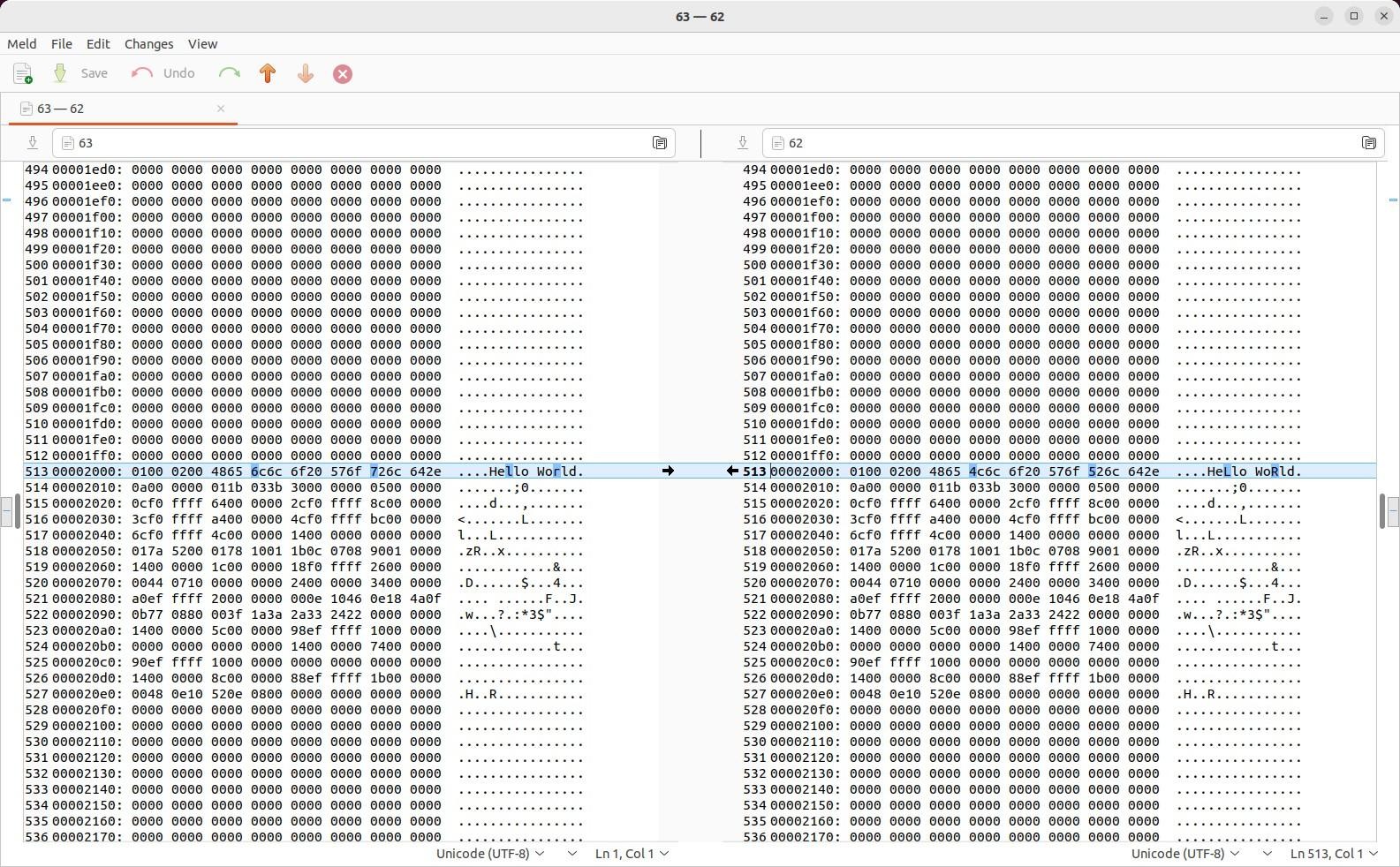Comparing two hex files is crucial for various tasks, from firmware analysis to software debugging. This guide provides multiple methods for effective hex file comparison, using both GUI and command-line tools.
Using Meld for Hex File Comparison
Meld is a powerful visual diff and merge tool that simplifies comparing hex files. However, since Meld works best with text-based files, directly comparing raw hex files can be inefficient. Here’s a more effective approach:
-
Convert to a Readable Format: Use the
xxdcommand to convert binary or Intel hex files into a format Meld can interpret effectively:xxd file1.hex file1.xxd xxd file2.hex file2.xxdThis generates
.xxdfiles containing both the hexadecimal representation and the corresponding ASCII characters, making differences easier to spot. -
Compare with Meld: Now, use Meld to compare the generated
.xxdfiles:meld file1.xxd file2.xxdMeld will visually highlight the differences, allowing for easy identification of discrepancies. You can navigate between differences using
Alt + DownandAlt + Up, or by scrolling with the mouse wheel over the center divider.
 Comparing two xxd files in Meld
Comparing two xxd files in Meld
Comparing Intel Hex Files
Intel hex files, commonly used for microcontrollers, require an extra step before comparison. They lack the human-readable ASCII representation found in standard hex files. Here’s how to compare them:
-
Convert to Binary: Use
objcopy(orxc32-objcopyfor Microchip XC32 toolchains) to convert Intel hex files to binary:objcopy --input-target=ihex --output-target=binary file1.hex file1.bin objcopy --input-target=ihex --output-target=binary file2.hex file2.binImportant: Ensure to specify the output file name (e.g.,
file1.bin) to prevent overwriting the original hex file. -
Compare Binary Files Using xxd and Meld: Use
xxdto convert the binary files to a readable format and then compare them using Meld:
meld <(xxd file1.bin) <(xxd file2.bin)This streamlined “one-liner” combines both conversion and comparison:
objcopy --input-target=ihex --output-target=binary file1.hex 1.bin
&& objcopy --input-target=ihex --output-target=binary file2.hex 2.bin
&& meld <(xxd 1.bin) <(xxd 2.bin)Remember to use the appropriate objcopy command for your compiler toolchain (e.g., xc32-objcopy for Microchip XC32).
Command-Line Comparison: Beyond Meld
For situations where a GUI isn’t available, such as remote SSH sessions, use command-line tools:
-
diffandxxd: Combinediffwithxxdfor a text-based comparison:diff -u --color=always <(xxd file1.bin) <(xxd file2.bin) | less -RFX ``` This command highlights differences character by character. -
vbindiff: This specialized tool provides a terminal-based, visually intuitive way to compare binary files, offering features like searching around line wraps thatmeldlacks.
Optimizing Large Hex Files
Large hex files can make comparisons slow and resource-intensive. Consider these optimizations:
hex2xxdhexFunction: This custom bash function (available in the eRCaGuy_dotfiles repository) converts hex files to.xxd.hexand.xxd_short.hex. The latter removes lines containing only zeros, significantly reducing file size for easier comparison in Meld.
Conclusion
Comparing hex files effectively requires choosing the right tools and techniques. Meld provides a user-friendly visual comparison, especially when combined with xxd for converting binary and Intel hex files. For command-line environments, diff, vbindiff offer powerful alternatives. Optimize large files using techniques like the hex2xxdhex function to streamline the process. By understanding these methods, you can efficiently analyze and compare hex files for various applications.
